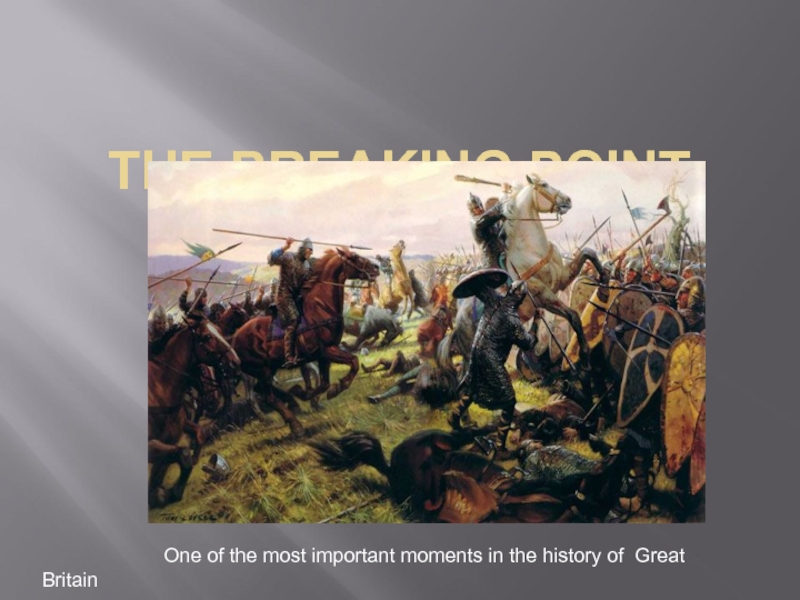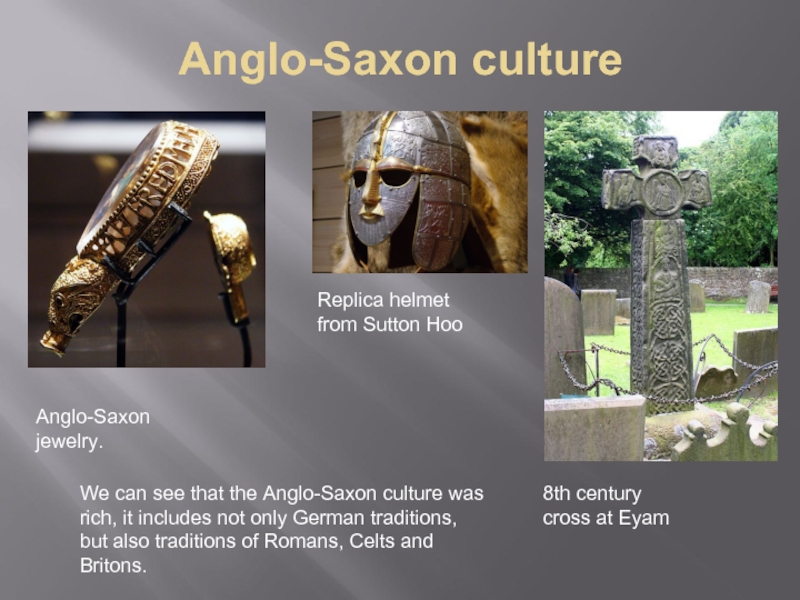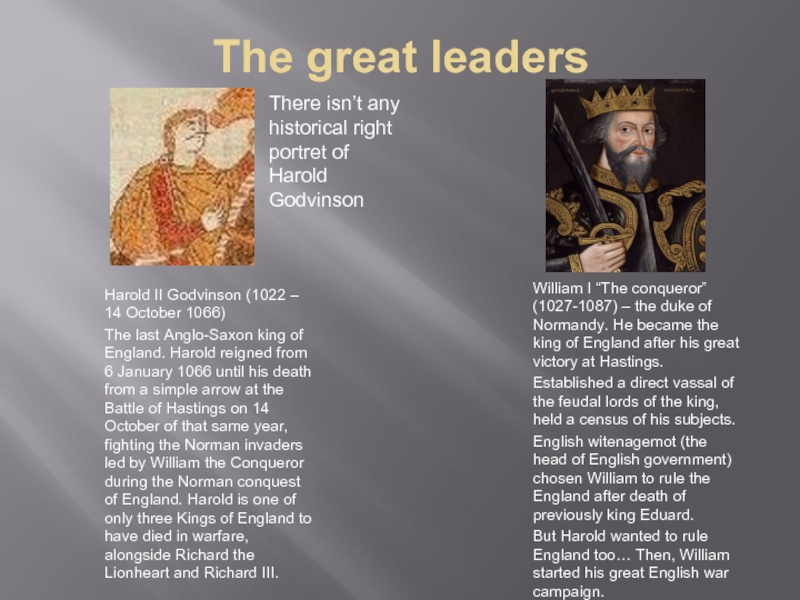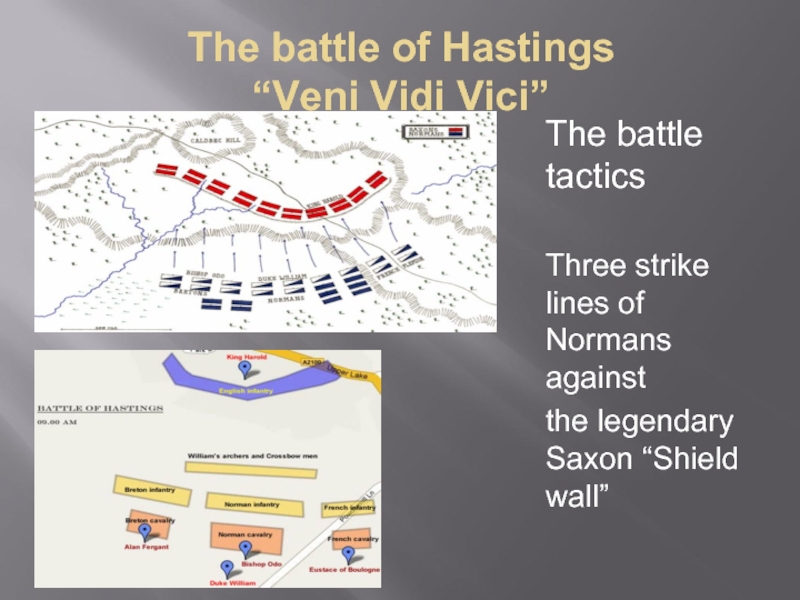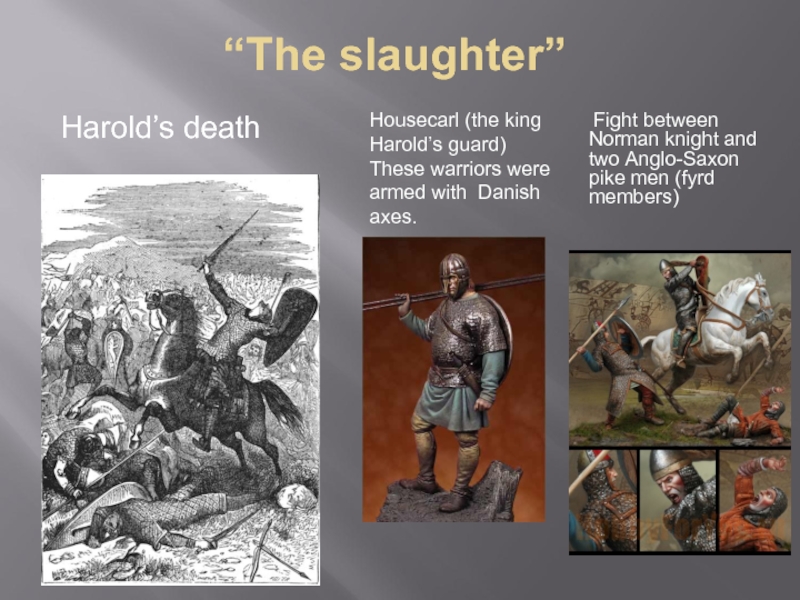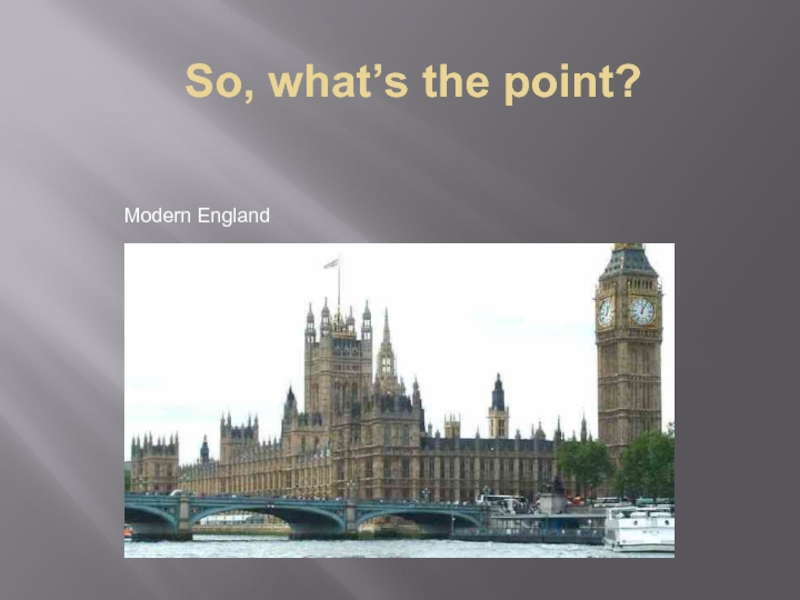Разделы презентаций
- Разное
- Английский язык
- Астрономия
- Алгебра
- Биология
- География
- Геометрия
- Детские презентации
- Информатика
- История
- Литература
- Математика
- Медицина
- Менеджмент
- Музыка
- МХК
- Немецкий язык
- ОБЖ
- Обществознание
- Окружающий мир
- Педагогика
- Русский язык
- Технология
- Физика
- Философия
- Химия
- Шаблоны, картинки для презентаций
- Экология
- Экономика
- Юриспруденция
The breaking point
Содержание
- 1. The breaking point
- 2. The great migration period400-600 years AD The
- 3. Anglo-Saxon cultureAnglo-Saxon jewelry.Replica helmet from Sutton Hoo8th
- 4. NormansViking and Norman warriorsOf course, in the
- 5. The great leadersHarold II Godvinson (1022 –
- 6. The battle of Hastings “Veni Vidi Vici”The
- 7. “The slaughter”Harold’s death Fight between Norman knight
- 8. The new king
- 9. So, what’s the point?Modern England
- 10. Скачать презентанцию
Слайды и текст этой презентации
Слайд 2The great migration period
400-600 years AD
The migration of north
Germanic and Danish tribes, called Saxons, Angles and Jutes, across
the North sea to the South and East EnglandBritish territory, settled by Celtic, Jutes, Saxon and English tribes.
Слайд 3Anglo-Saxon culture
Anglo-Saxon jewelry.
Replica helmet from Sutton Hoo
8th century cross at
Eyam
We can see that the Anglo-Saxon culture was rich, it
includes not only German traditions, but also traditions of Romans, Celts and Britons.Слайд 4Normans
Viking and Norman warriors
Of course, in the 11-th century Normans
brought into England their traditions and, in addition, they changed
English language by using French!Normans – French-speaking descendants of Vikings, who lived in Normandy (North France) and who kept traditions of these great warriors.
Слайд 5The great leaders
Harold II Godvinson (1022 – 14 October 1066)
The
last Anglo-Saxon king of England. Harold reigned from 6 January
1066 until his death from a simple arrow at the Battle of Hastings on 14 October of that same year, fighting the Norman invaders led by William the Conqueror during the Norman conquest of England. Harold is one of only three Kings of England to have died in warfare, alongside Richard the Lionheart and Richard III.William I “The conqueror” (1027-1087) – the duke of Normandy. He became the king of England after his great victory at Hastings.
Established a direct vassal of the feudal lords of the king, held a census of his subjects.
English witenagemot (the head of English government) chosen William to rule the England after death of previously king Eduard.
But Harold wanted to rule England too… Then, William started his great English war campaign.
There isn’t any historical right portret of Harold Godvinson
Слайд 6The battle of Hastings
“Veni Vidi Vici”
The battle tactics
Three strike
lines of Normans against
the legendary Saxon “Shield wall”
Слайд 7“The slaughter”
Harold’s death
Fight between Norman knight and two Anglo-Saxon
pike men (fyrd members)
Housecarl (the king Harold’s guard)
These
warriors were armed with Danish axes.
